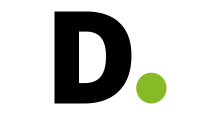Objectives and Key Results (OKRs) have become the gold standard for aligning teams and measuring performance. Whether you’re a startup scaling fast or an enterprise optimizing execution, OKR software simplifies goal setting, tracking, and accountability. In 2025, several platforms have emerged as leaders in the OKR space—each bringing unique strengths to the table.
What is OKR Software?
OKR software is a digital tool designed to help organizations implement and manage the Objectives and Key Results (OKR) goal-setting framework. It allows teams and individuals to set ambitious goals (objectives), track measurable outcomes (key results), and align their efforts with the company’s overall strategy.
What Does OKR Software Do?
Here’s what a typical OKR platform helps you with:
- Set clear goals: Define objectives and link them to key results across individuals, teams, and departments.
- Align across the organization: Ensure every team’s goals support broader company goals, creating visibility and alignment.
- Track progress: Monitor progress in real-time with dashboards, progress bars, and status updates.
- Improve accountability: Assign ownership of key results and track who is responsible for what.
- Enhance transparency: Provide visibility into how everyone’s work contributes to larger objectives.
- Integrate with workflows: Sync goals with tools like Slack, Microsoft Teams, Jira, and task/project management systems.
Why Use OKR Software?
OKR software reduces the manual overhead of tracking goals in spreadsheets or emails and makes goal-setting part of everyday operations. It encourages:
- Focus: Everyone knows what to prioritize.
- Engagement: Employees see how their work matters.
- Agility: Companies can quickly adapt goals as priorities shift.
- Performance: Clear metrics and frequent check-ins lead to better execution.
If you’re using OKRs to drive alignment, execution, and performance, OKR software makes the process scalable, especially as your team grows.
Below are the 10 best OKR software tools you should consider in 2025.
1. Lattice
Lattice continues to be a dominant force in the performance and goal-setting space. With OKRs fully integrated into its performance reviews, 1:1 meetings, and engagement surveys, Lattice enables a holistic approach to people and performance management.
Key Features:
- Set and align OKRs at individual, team, and org-wide levels
- Integrated performance reviews and feedback cycles
- Real-time goal tracking dashboards
- Public OKR visibility with progress transparency
- Powerful analytics to assess goal attainment and alignment
Best For: Mid-sized to large organizations seeking a unified performance and goal management platform.
2. Weekdone
Weekdone is a lightweight and visual OKR solution ideal for teams that want a simple, effective way to track progress. Its intuitive interface and weekly planning tools make it a top pick for SMBs and agile teams.
Key Features:
- Intuitive OKR hierarchy (Company > Team > Individual)
- Weekly progress updates and check-ins
- Color-coded visual dashboards for progress tracking
- Team engagement and feedback tools
- Automatic weekly reports
Best For: Small to medium teams looking for a cost-effective, easy-to-use OKR tool.
3. Quantive (formerly Gtmhub)
Quantive has rebranded and expanded its capabilities, offering enterprise-grade OKR software with advanced automation and analytics. It’s particularly well-suited for fast-growing companies that need powerful integrations and real-time insights.
Key Features:
- Automated data syncing from 160+ tools (Salesforce, Jira, etc.)
- KPI dashboards for real-time OKR tracking
- Robust security and permission controls
- Advanced analytics for impact forecasting
- Customizable OKR templates and OKR wizards
Best For: Data-driven enterprises looking for OKR automation and analytics at scale.
4. ClickUp
ClickUp is known as an all-in-one productivity tool, and its OKR feature set is both flexible and powerful. Users can build custom goal hierarchies and workflows, making it a popular choice for organizations already using ClickUp for task management.
Key Features:
- Hierarchical goals and sub-goals
- Track key results and KPIs directly in tasks
- Goal folders for organizing by department or team
- Real-time dashboards and goal progress automation
- Goal reminders and integration with team calendars
Best For: Teams already using ClickUp who want built-in OKR functionality without switching platforms.
5. Profit.co
Profit.co delivers one of the most comprehensive OKR experiences, with robust tracking, collaboration, and review features. It supports OKRs across company, department, team, and individual levels, making it suitable for businesses of all sizes.
Key Features:
- Guided OKR creation with built-in templates
- OKR scoring and alignment charts
- Employee engagement and feedback tools
- Performance and task management integration
- Custom workflows and multi-language support
Best For: Organizations looking for end-to-end OKR and performance management in a single platform.
6. 15Five
15Five blends OKR tracking with employee engagement, feedback, and performance coaching. It’s especially valuable for organizations focused on fostering a high-performance culture through transparency and continuous development.
Key Features:
- Align goals with regular check-ins and 1-on-1s
- High-performance coaching workflows
- Engagement surveys and feedback integration
- Manager dashboards and progress tracking
- Seamless integration with Slack, Microsoft Teams, and calendars
Best For: HR and PeopleOps teams aiming to improve performance through employee-centric development.
7. Perdoo
Perdoo is a dedicated OKR and KPI software that allows organizations to align strategic goals with measurable outcomes. It offers both OKR and KPI tracking side by side, bridging the gap between long-term vision and short-term execution.
Key Features:
- Strategy map for visualizing company-wide OKRs
- Public and private goals
- OKR and KPI side-by-side tracking
- Google Sheets and Excel integrations
- Smart alerts and weekly progress nudges
Best For: Companies looking to combine strategy execution with transparent progress tracking.
8. Koan
Koan promotes collaborative goal-setting through its transparent, feedback-driven interface. With team reflections and progress check-ins built into the workflow, it’s ideal for remote or hybrid teams.
Key Features:
- Lightweight OKR management with weekly reflections
- Collaborative goal-setting
- Team-wide visibility into progress
- Smart reminders and nudges
- Templates and historical data for planning
Best For: Remote-first teams seeking collaboration and visibility around goal progress.
9. Ally.io (Now part of Microsoft Viva)
Ally.io, now a part of Microsoft Viva, offers deep OKR functionality embedded within the Microsoft ecosystem. It enables teams to bring goals into daily workflows via Microsoft Teams, Outlook, and more.
Key Features:
- Full OKR lifecycle tracking from creation to review
- Embedded in Microsoft Teams and Viva
- Automated progress updates via integrations
- Executive dashboards and goal alignment mapping
- Strong enterprise-grade access control
Best For: Enterprises using Microsoft 365 and looking for OKR alignment across tools.
10. Workboard
Workboard is a strategic execution platform that enables large teams to accelerate results through smart OKR alignment, performance metrics, and business rhythm automation. It’s designed for executives and cross-functional teams alike.
Key Features:
- Executive dashboards and strategic alignment maps
- Weekly business reviews (WBRs) and KPI tracking
- OKR coaching and playbooks
- Integration with Salesforce, Jira, Workday, etc.
- Risk analysis for underperforming OKRs
Best For: Enterprises managing complex, cross-functional OKRs at scale.
Final Thoughts: Choosing the Right OKR Software
When choosing an OKR tool, the best software isn’t necessarily the most feature-rich—it’s the one that best fits your company’s size, culture, and workflows. Startups may prioritize ease of use and fast setup (like Weekdone or Koan), while larger enterprises may need robust integration, forecasting, and analytics (like Quantive or Workboard).
Here’s a quick recap based on business needs:
| Business Type | Recommended Tools |
| Small Teams / Startups | Weekdone, Koan, ClickUp |
| Midsize Businesses | Lattice, Profit.co, 15Five |
| Enterprises & Corporates | Quantive, Workboard, Ally.io, Perdoo |
| Microsoft-centric Companies | Ally.io (Microsoft Viva), Workboard |
| People-Centric Cultures | 15Five, Lattice |
To get the most out of your OKR implementation, ensure your team receives proper onboarding and training with whichever platform you choose. Clear communication, transparency, and accountability remain the foundation of a successful OKR strategy—software just makes it easier to scale.












